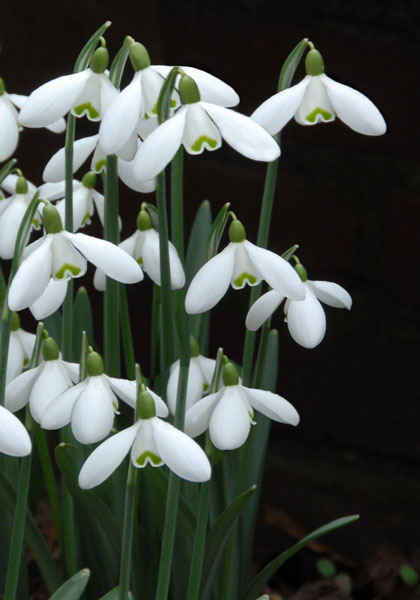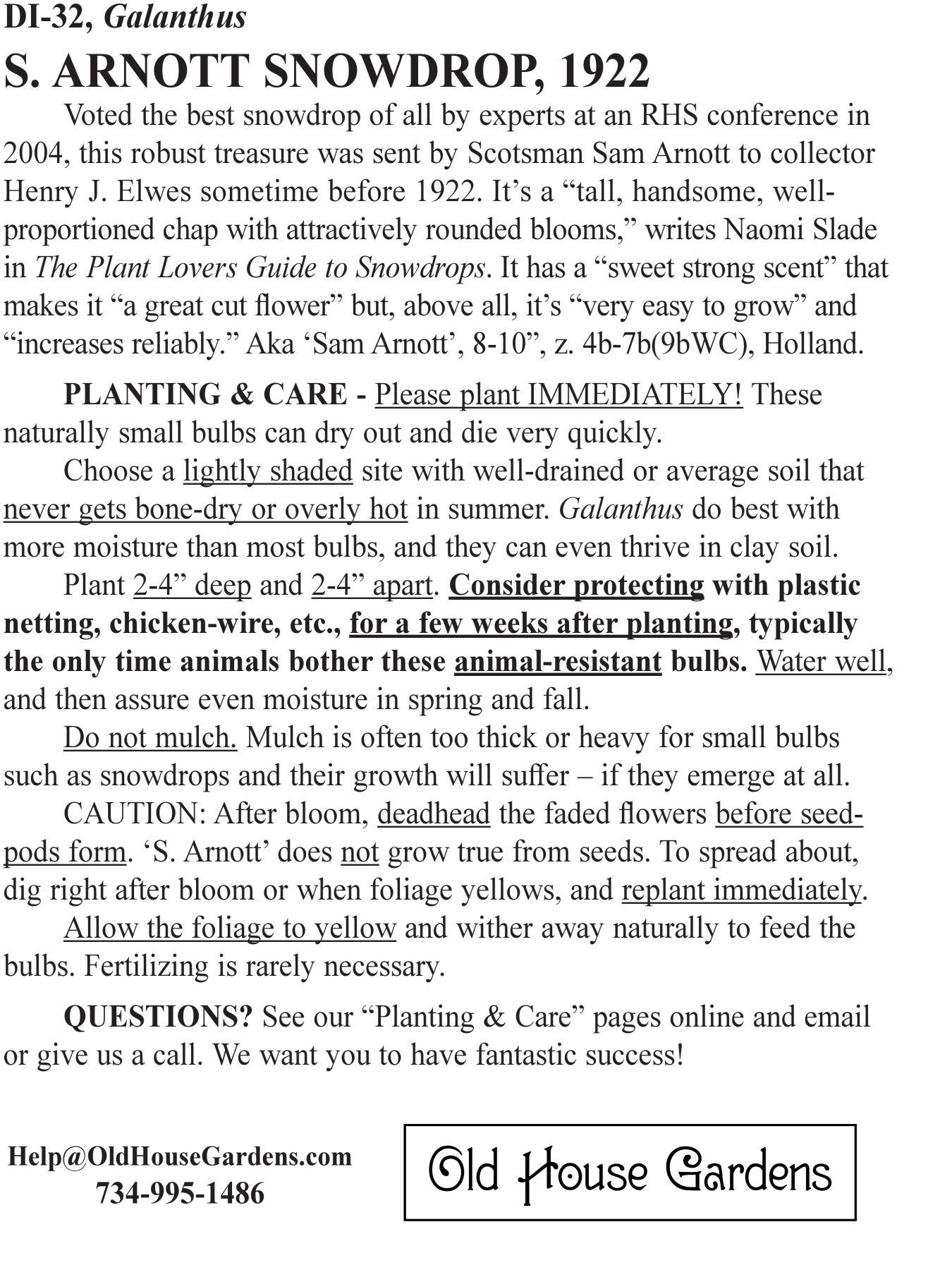|
|

 
|
|
Voted best of all by experts at an RHS conference in 2004, ‘S. Arnott’ was sent by Scotsman Sam Arnott to collector Henry Elwes sometime before 1922. It’s a “tall, handsome, well-proportioned chap with attractively rounded blooms,” writes Naomi Slade in The Plant Lovers Guide to Snowdrops. It’s “very easy to grow” and “increases reliably,” and its “sweet strong scent” makes it “a great cut flower.” Aka ‘Sam Arnott’, 8-10”, zones 4b-7b(9bWC), from Holland. |
|
SUB TYPE wildflower, LittleBulbs ZONES 4b-7b(9bWC) HEIGHT 8-10” BLOOM SEASONS very early spring LIGHT half sun, light shade |
PLANTING & CAREPlant ASAP when you receive them in October. The naturally small bulbs of Galanthus can dry out and die very quickly in storage. (However, despite modern hype, planting “in the green” is not essential for success.) Choose a lightly shaded site with well-drained or average garden soil that never gets bone-dry or overly hot in summer. Galanthus do best with more moisture than most bulbs, and they can even thrive in clay soil. Plant 3”-4” deep and 3”-4” apart. Consider protecting with plastic netting, chicken-wire, etc., for a few weeks after planting, typically the only time critters bother these animal-resistant little bulbs. Water well, and then assure even moisture in spring and fall. Do not mulch. Mulch is often too thick or heavy for small bulbs such as snowdrops and their growth will suffer – if they emerge at all. After bloom, allow the foliage to yellow and wither away naturally to feed the bulbs. Fertilizing is rarely necessary. CAUTION: Named cultivars such as ‘S. Arnott’ will NOT grow true from seed. To keep yours from being overrun by mixed and typically inferior seedlings, remove any seedpods that form before they ripen. With good care, ‘S. Arnott’ and other named cultivars will multiply underground into ever-expanding clumps. If you want to spread them about, dig either right after bloom (“in the green”) or when the foliage yellows, and replant immediately. Learn more about growing and enjoying snowdrops at our Fall Diverse Newsletter Archives and Bulbs as Cut-Flowers page. |

|
SPRING
|
· |
SUMMER
|
· |
FALL
|
· |
LEARN MORE
|
· |
ORDERING
|

|










